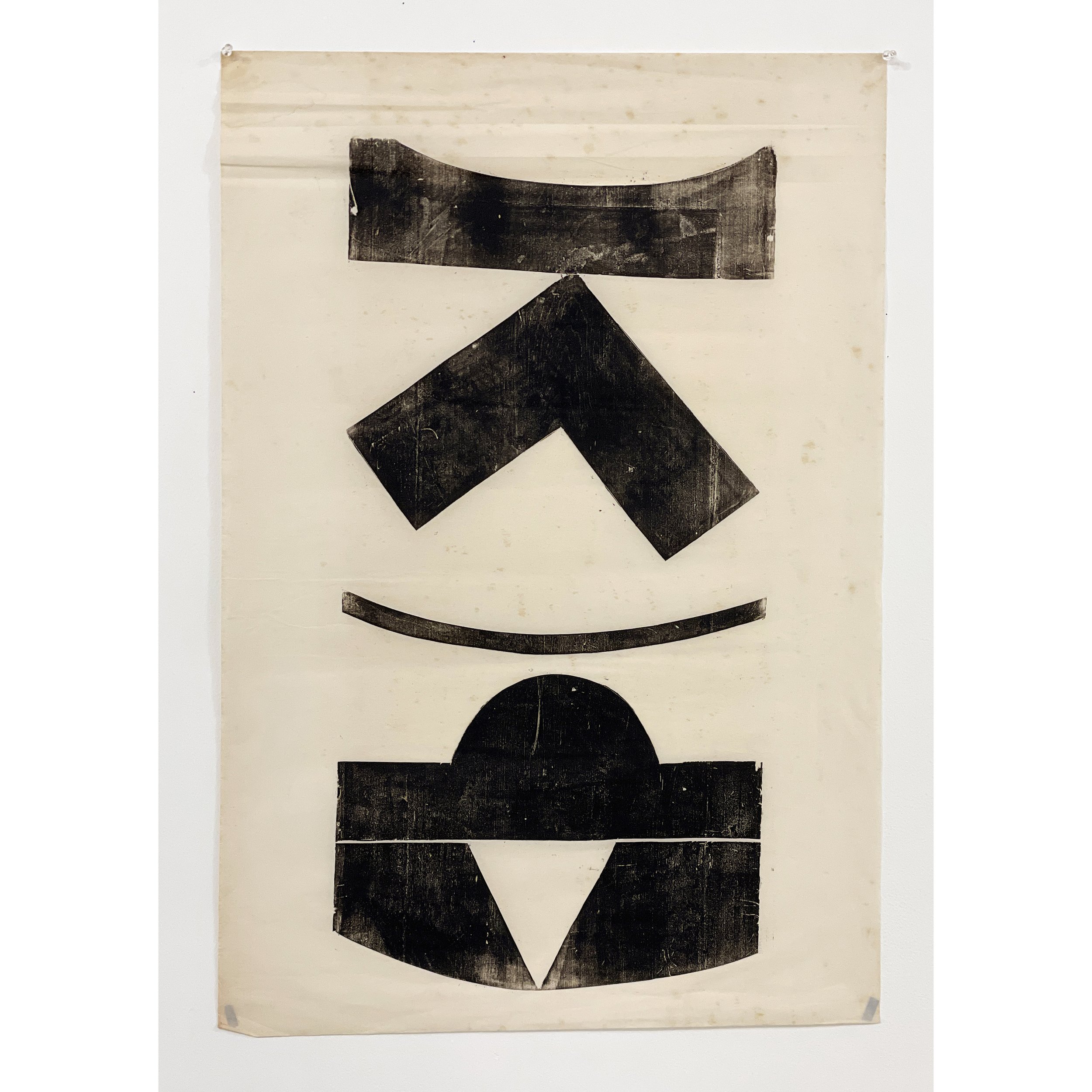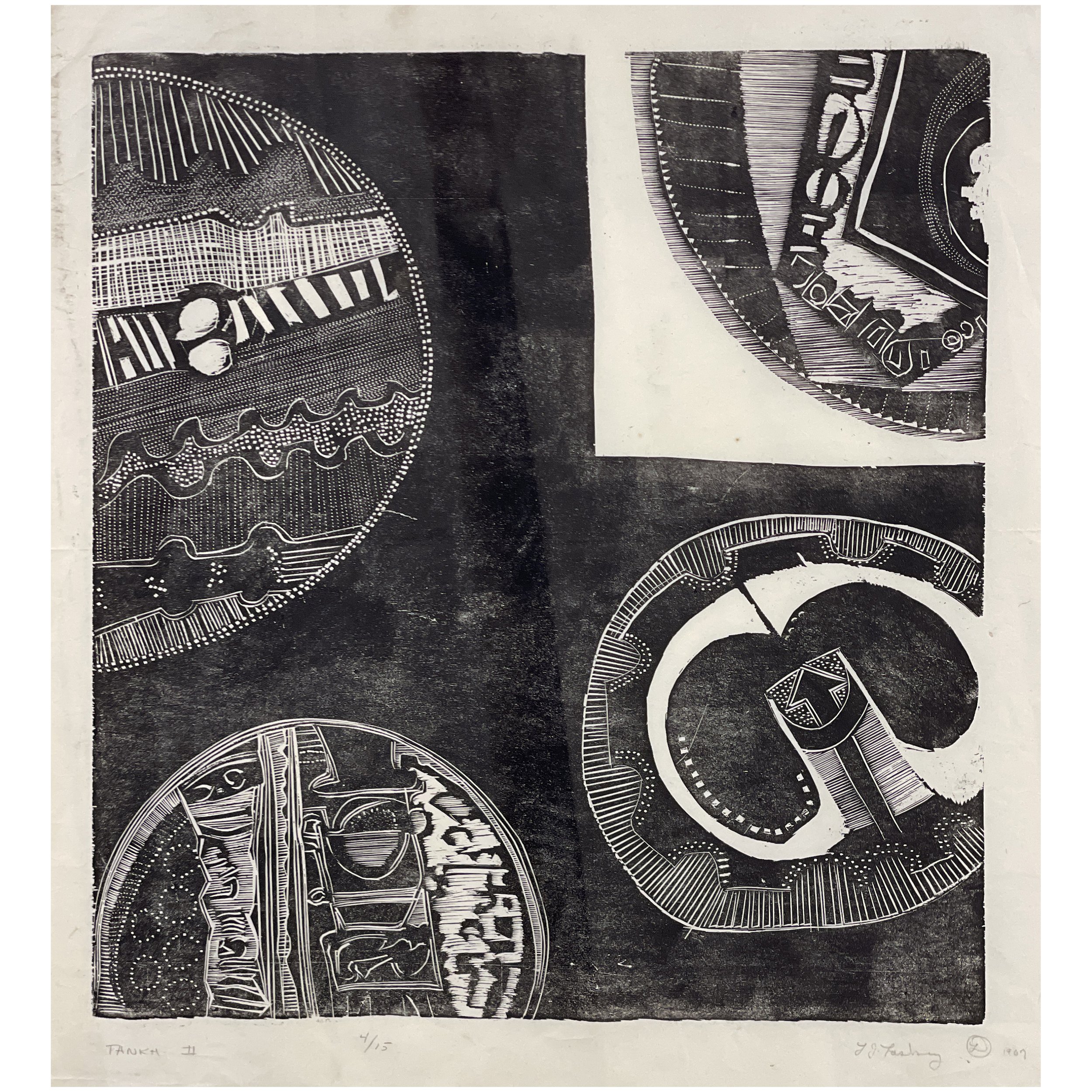LESLIE LASKEY: WOODCUTS
On view at the Columbia Archive Gallery
Bruno David Gallery and Columbia Archive Gallery present a retrospective of woodcuts by the late artist Leslie Laskey (1921-2021) at the Columbia Archive Gallery, 2731 Hickory Street, St. Louis, Missouri (The Columbia Foundation for Visual Art). This exclusive exhibition, offers a comprehensive look at Laskey's mastery of the woodcut technique.
As this exhibition demonstrates, Laskey is arguably THE preeminent wood block artist of the 20th Century. Come and experience this genius as he moves from Realism to Abstraction, with all the stops on the way. You will truly experience a journey through time guided by the artist’s mind, eye and hand.
The Columbia Foundation Archives contain 3000 works of Laskey’s art and artifacts. Following Laskey’s teaching philosophy, derived from Bauhaus ideals, we are dedicated to the concept that the hand is the tool that teaches the mind, a mantra that defines us as humans.
Scholars widely consider Laskey and his dear comrade Shiko Munakata as the great woodcut artists of the 20th Century. Encouraged by a supportive and creative atmosphere nourished by Dean Joseph Passoneau, Laskey and Munakata were the leaders of a rich outpouring of woodcut art at the former School of Architecture and Fine Art (now the Sam Fox School of Design & Visual Arts) at Washington University in St. Louis. Laskey and Munakata taught, lived, and interacted with such monumental figures as Werner Drewes and Max Beckmann, a truly remarkable convergence of artistic brilliance.
Laskey’s students were profoundly impacted by this creative energy, all going into their professional careers touched by this rare moment. Jim Harris, later to become also a Professor of Architecture at Washington University in St. Louis, learned, through Laskey’s tutelage, to become a highly skilled woodcut artist.
On making Woodcuts:
Cutting and printing woodcuts is a very labor-intensive ordeal. It is HARD work. Dangerous, even. Thumb pressure is everything. Push the razor-sharp knife (preferably by the great knife maker Hans Mueller) into the exquisitely selected end-grain Japanese Magnolia wood to create your design. After that, ink evenly with Squid Ink, another Japanese contribution, gently lay down a sheet of Japanese handmade Mulberry wood paper, and then burnish the paper surface with a handmade palm leaf burnisher. We will show these beautifully made objects to you. Now comes the best part: hold your breath, pull the fragile paper away from the viscous inked block, which makes a hissing sound, like a kiss. With a little luck and patience, the paper floats up into BIRTH. A reverse image of the incised image. Wow!
For additional colors, the wood block is cleaned and re-cut, re-inked, and perfectly registered over the original image (not easy, as you can’t see what you’re doing). It’s called a “Suicide Block” for very good reasons. There’s NO going back. and NO inky thumb prints allowed!
Munakata worked almost exclusively on end-grain slices of Boxwood. Leslie worked on anything at hand, like orange crates or scrap plywood. We all seek our own travail. Never could two people be so different and yet so aligned. Munakata, peasant-stock, short, gruff, all–life embracing, his eyes glittered across life like a reaper with a scythe, shearing the corn: he took all of life in! Leslie, behind myriad doors, saw all, too, but stood hidden. They, of the spatulate thumbs and razor knives, bonded immediately. Such joy, so evident in photographs.
Of course, Leslie was Polish and therefore his thumbs were not of Japanese peasantry, but the product of his incarceration in the Nazi concentration camp Stalag 12. As a captured courier personally assigned to General Eisenhower, he was tortured by having his thumbs crushed with hammers, among other indignities. Thus, are wood block masters made. The thumb: the instrument of love. Come see!
These observations are a firsthand witness by Frank Schwaiger, as he was there. Those others of us who were there too, will remember how our lives were shaped by this great teacher and artist.
In a Sunny Window
1956
Woodcut on Japanese paper
15 x 6.5 in
Untitled
Woodcut on Japanese paper
Untitled
Woodcut on Japanese paper
Untitled
Woodcut on Japanese paper
Tanka II
Woodcut on Japanese paper
29 x 22 in
Begonia 2
Woodcut on Japanese paper
14 x 13.5 in
Untitled
Woodcut on Japanese paper
Tanka
Woodcut on Japanese paper
15 x 20 in
Tanka I
1968
Woodcut on Japanese paper
19.25 x 17.5 in (image), 35.5 x 23.75 in (sheet)
Tanka I
Woodcut on Japanese paper
29 x 22 in
Seal from a Document of Summer
1968
Woodcut on Japanese paper
15.5 x 12.75 in














